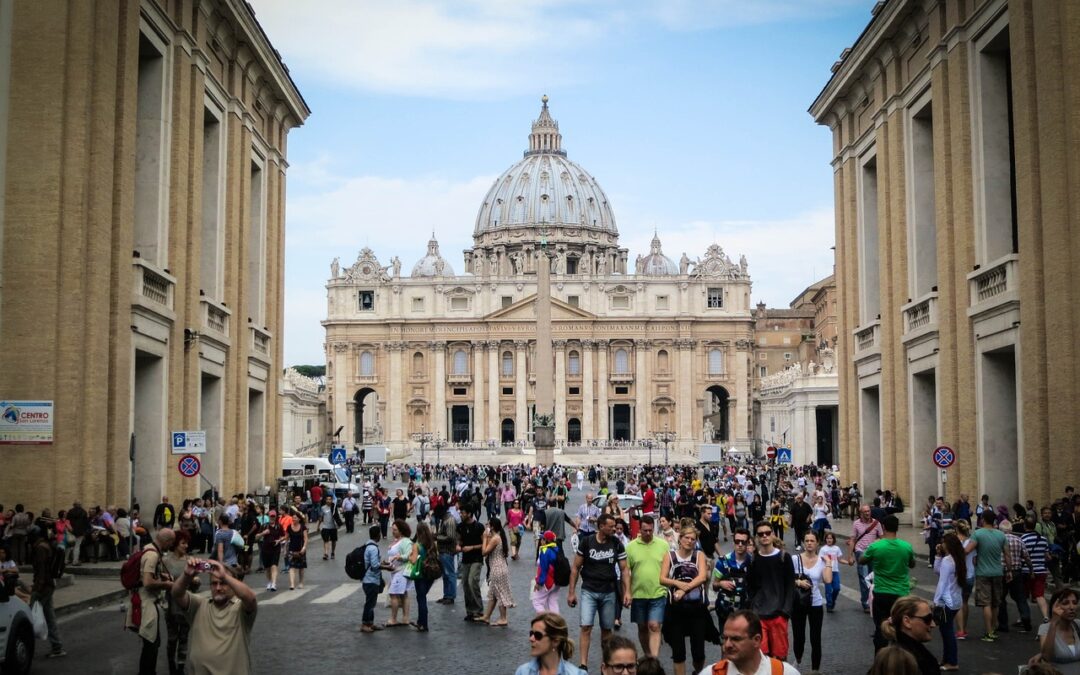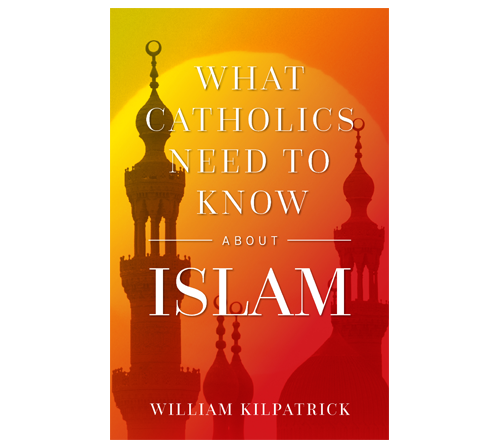Why so many Catholics are leaving.
Pope Francis recently called for a “Church open to everyone.” Nothing new here. The Church has always been open to everyone—including sinners. The Church has always acknowledged that it is “a Church of sinners.”
But when Francis says “open to everyone” he seems to have something else in mind. Traditionally, when Catholics spoke of a “Church of sinners” it was understood to mean repentant sinners: people who were sorry for their sins and were trying their best to sin no more.
By contrast, what Francis and other woke/progressive Catholics seems to mean is “proud sinners:” people who are proud of their lifestyle choices and see nothing sinful about them.
Two Catholics that immediately come to mind are Joe Biden and Nancy Pelosi. Both seem proud of their pro-abortion stance and if challenged both simply double-down on their position. And both can point to gestures by Francis indicating that he considers them Catholics in good standing.
Francis has praised other prominent abortion advocates including Emma Bonino whom Life Site News refers to as the “notorious Italian abortionist.” Although Bonino had not only promoted abortion but had also personally performed numerous abortions, Francis referred to her as one of Italy’s “forgotten greats.”
In a recent piece for Front Page, journalist Joseph Hippolito makes the case that Francis has chosen to abandon Catholicism’s historic opposition to abortion in all but name…” Hippolito argues that abortion is largely “irrelevant” to Francis.
I bring this up because many Catholics—perhaps a majority—have a different view of Francis. Because of some statements he has made about abortionists being like a “hit man,” they assume he is strongly opposed to abortion. He is, after all the pope; so, they reason that he is automatically opposed to abortion, same-sex unions, the LGBT agenda; and is automatically in favor of Church teaching on chastity, marriage, contraception, and so on.
But it just isn’t so, and the best evidence can be found by looking at a list of his appointments over the years.
It’s often said that “personnel is policy.” In other words, a leader’s policies can best be discerned not by what he says, but by who he hires. If, for example, the president’s appointments for Secretary of Defense and Joint Chiefs of Staff were all pacifists, we could safely conclude that the president was also a pacifist. We could further assume that he would probably pursue a policy of appeasement.
Let’s look at some of Francis’ key appointments. Hippolito explains that the clearest evidence of Francis’ relative indifference to abortion comes from Cardinal Vincenzo Paglia, the President of the Pontifical Academy for Life. During a recent television interview, Paglia said the Church had no interest in opposing Italy’s Law 194 which legalizes abortion in the first trimester. Paglia said that the law represented “a pillar of our social life.”
So, here’s the head of the Pontifical Academy for Life which, as Hippolito points out, was founded by John Paul II “specifically to oppose abortion,” and he thinks Italy’s abortion law is “a pillar of our social life.”
Did Francis know Paglia’s views before he appointed him to the post? Well, of course he knew. Paglia was already notorious for having a billboard-size homoerotic mural painted on the wall of his cathedral. What’s more, Paglia himself appears in the painting—nude, embracing another man, and surrounded by entangled bodies of both sexes. One would not need to be very astute to assume that Paglia might not embrace the Church’s stance on abortion—nor the traditional Catholic view of same-sex unions.
Although Francis says he wants a Church that is “open to everyone,” the highest and most influential posts in the Church are not open to everyone. Increasingly, they seem to be open mainly to prelates who are sympathetic to the LGBT ideology.
This is not to say that LGBT-friendly prelates are themselves involved in sexual activities, but that they are strongly supportive of the LGBT agenda. With that in mind, here are some of the more prominent LGBT-friendly prelates in the U.S. who Francis has promoted to high positions.
Most recently, Francis elevated San Diego Bishop Robert Mc Elroy to the office of cardinal. Mc Elroy was the only North American among the 21 churchmen who Francis made cardinals during an August 27 consistory in Rome. Normally, the office conferred on McElroy would be given to a higher-ranking bishop in a larger diocese. In this case, that would be Archbishop Salvatore Cordileone of San Francisco. But Francis passed over Cordileone—most likely as punishment for Cordileone’s having barred Nancy Pelosi from receiving Communion because of her strident pro-abortion stance.
Like Francis, however, Mc Elroy has no problem with pro-abortion politicians receiving Communion. So, Francis gave him the nod. Another plus for Mc Elroy was his strong support and encouragement of the LGBT community.
Along with his auxiliary bishop John Dolan, Mc Elroy once celebrated a mass for “families of the LGBT community.” After Holy Communion “Nicole” Murray-Ramirez, a nationally-known drag queen activist, was allowed to speak to the congregation from the lectern. Afterwards, Murray-Ramirez presented Mc Elroy and Dolan with a humanitarian award on behalf of an international drag queen organization.
An interesting footnote to all this is that after the LGBT-ing of the Church in San Diego, and shortly after making Mc Elroy a Cardinal, Francis promoted auxiliary bishop Dolan to be the new bishop of Phoenix—one of the largest and fastest growing dioceses in America.
Indeed, prelates with a record of supporting the LGBT movement tend to end up overseeing some of the nation’s most influential dioceses: Blaise Cupich became the Cardinal/Archbishop of Chicago, Bishop Joseph Tobin was named Archbishop of Newark (he is now a Cardinal). And LGBT-friendly Wilton Gregory was given the archdiocese of Washington, D.C.
The Washington, D.C. Archdiocese, by the way, seems to be reserved exclusively for LGBT-friendly bishops. First there was the notorious Theodore McCarrick, next was Donald Wuerl, and now Wilton Gregory (it is rumored that Joseph Tobin was also being considered).
Moreover, bishops with the proper LGBT credentials are also often tapped for important international appointments. For example, in 2019 Blaise Cupich was put in charge of the Vatican summit on clerical sex-abuse, despite the fact that Cupich himself has been credibly accused of covering up cases of priestly abuse.
But that sort of thing is no bar to upward mobility in the Francis papacy. Despite everything that was known about Cardinal Mc Carrick, Francis, upon becoming pope, lifted all restrictions on Mc Carrick and sent him off to China, Iran, and other places as a kind of roving Vatican ambassador.
Moreover, Francis undoubtedly was aware that Bishop Mc Elroy has been credibly accused of covering-up instances of priestly sex-abuse—including the rape of a young woman. And Mc Elroy also covered up knowledge he had of Mc Carrick’s history of abuse.
Speaking of Mc Carrick, mention should be made here of Bishop Kevin Farrell who shared an apartment with Mc Carrick for six years in Washington. In 2016, Francis put the LGBT-friendly prelate in charge of the Dicastery for the Laity, Family and Life. In 2018, Farrell was appointed head of the World Meeting of Families Conference in Dublin, and he promptly invited LGBT activist Fr. James Martin as a featured speaker. Most recently, Farrell was named by Francis as papal Camerlengo—a position which puts him in charge of the Vatican should Francis die or resign, and also gives him considerable influence over the cardinals’ choice of the next pope.
The next pope? Would it be rash to assume that he will have a strong sympathy for the LGBT agenda? At this point it seems rash to assume otherwise
One of Francis most recent appointments is Portuguese Cardinal Jose Tolentino de Mendonca. Mendonca was appointed as Prefect of the Dicastery for Culture and Education. According to Life Site News, “commentators have suggested that de Mendonca’s meteoric rise is due to his alignment with Francis’s ideology, particularly on the subject of LGBT matters.” Among other things, de Mendonca wrote the introduction to the Portuguese translation of a book by radical Spanish nun, Teresa Forcades, who campaigned for the legalization of abortion and the recognition of same-sex “marriage.”
In a 2016 interview, Mendonca, echoing Francis, said that the Church must be “a place of welcome and mercy.” And he specifically mentions “homosexual persons” and the “remarried.” But how about the unborn? Are they also to be welcomed? And, if so, why does Mendonca praise a radical nun who campaigned for the legalization of abortion?
Francis says he wants the Church to be open to everyone, but his appointments show otherwise. They are not drawn from a broad spectrum of individuals who are representative of the views of a majority of practicing Catholics. Rather, they seem to represent mostly fringe elements in the Church.
How many ordinary Catholics would want a print of Cardinal Paglia’s mural hanging in their living room? How many would want to celebrate a prominent abortionist as one of the country’s “greats”? How many would want to be lectured to during Mass by a nationally-known drag queen activist?
Francis may want everyone to feel welcome in the Church, but he seems oblivious to the fact that a great many Catholics are feeling mighty uncomfortable with the Church he is shaping by his “in-your-face” appointments. According to Rorate Caeli, Cardinal Mendonca “was well known in the Portuguese Church for being the absolutely most fabulous fabuloso of the whole fabulousness.” The Catholic Church is supposed to be “The Church Universal,” but Francis seems intent on turning it into a club for the “fabulosa” and their friends.
In the 1960s and 1970s the avant garde in the Church experimented with kitchen table Masses, balloon Masses, clown Masses and various theological innovations in the hope of bringing more bodies into Church. Yet, between 1970 and 2021, the number of priests fell from 59,192 to 34,923. Meanwhile, weekly Mass attendance fell from 54.9 percent to 17.3 percent; and infant baptism from 1.089 million to 411,482. Francis has been pope now for 10 years and there is no evidence that his attempt to revive sixties-style openness has done anything to stanch the flow. The doors to the Church may be open wide, but an alarming number of Catholics are choosing to walk out.
This article originally appeared in the October 11, 2022 edition of Front Page.
Photo credit: Pixabay


